Learn Growing Lemongrass From Seed to Harvest and Its Uses
Published: 17 May 2024
Lemon grass is an aromatic, herbaceous plant. It is popular for its flavour and fragrance in cooking and alternative medicine. It’s a member of the grass family. It can be grown as a companion plant to other herbs, vegetables, and flowers. It has companion plants like basil, lemon verbena and marigold.
In this guide, I will share my experience and knowledge. I will cover growing lemongrass from seed and explain how to do it successfully. This way, even beginners can enjoy the benefits of this plant. They can grow it in their backyard or on their windowsill.
What is Lemongrass
Lemongrass is a tropical herb. It’s widely used in Asian cuisine for its lemony flavour and aroma. It’s a perennial grass that can grow up to six feet tall in the right conditions. It originates in the islands of Southeast Asia. Lemongrass has become a popular ingredient around the world. People use it in cooking, teas, cosmetics, and as an essential oil. It has medicinal properties, including anti-inflammatory and antifungal benefits.
Lemongrass is a hardy plant characterized by its tall, slender leaves and fibrous stalk. It thrives in warm, humid climates and can be grown in cooler regions with the right care. Once established, it is relatively easy to maintain.
The plant comes from the tropics. This heritage guides us through the needed steps. We will replicate an environment where lemongrass will flourish.
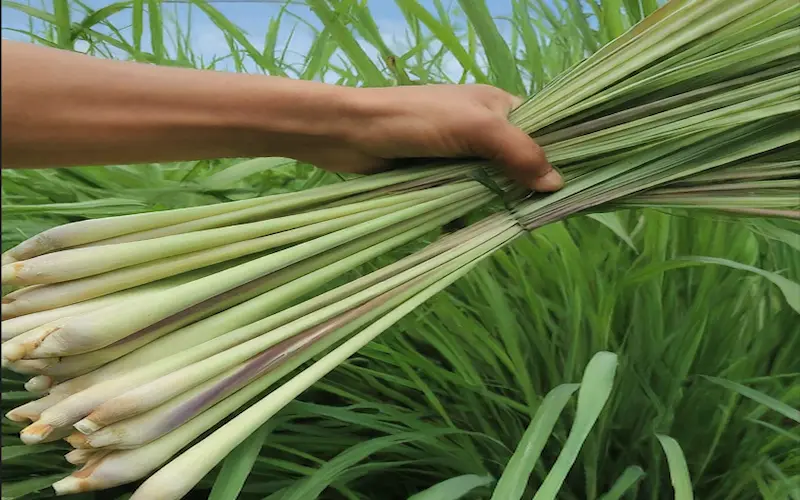
Introduction to Growing Lemongrass from Seed
It might seem hard at first, especially if you must learn to grow plants from their embryonic form. However, I’ve found it to be deeply satisfying. It starts with choosing good seeds and ends with harvesting your home-grown herbs.
The first step on this exciting journey is to buy lemongrass seeds. Get them from a good supplier. Once you have your seeds, you’ll need to create the right conditions for germination. These include warmth, moisture, and light. The process can take 1 to 4 weeks, depending on the conditions you provide.
After germination, your lemongrass seedlings will require consistent care as they mature. This includes moving them to larger pots or your garden, giving them enough water and sunlight, and protecting them from pests and diseases. In this guide, I’ll explain each step in detail. You’ll have all the knowledge needed to grow lemongrass from seed confidently.
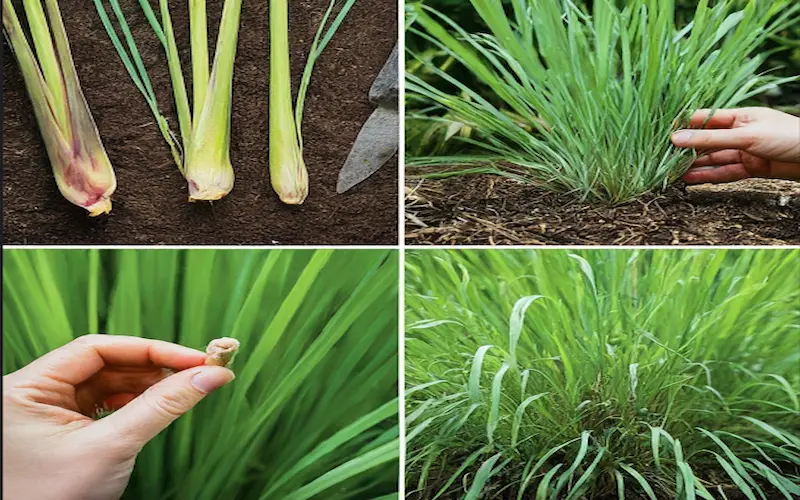
Benefits of Growing Lemongrass at Home
One of the joys of growing lemongrass at home is its many benefits. You get to enjoy the fresh lemongrass flavour in your dishes. You also gain the advantage of having a natural pest repellent in your garden. Lemongrass contains citronella, which is well-known for deterring mosquitoes and other pests.
It is also cost-effective. You’ll have a constant supply at your fingertips. Buying lemongrass stalks from the market can be costly and not always fresh. This is particularly beneficial for those who frequently use lemongrass in their cooking.
Furthermore, tending to a garden, even as simple as a pot of lemongrass, can be therapeutic. Research has shown that gardening reduces stress and promotes a sense of well-being. Lemongrass has a pleasant aroma. Working with it can be very soothing. It can also help your mental health.
Choosing the Right Lemongrass Seeds
The success of growing lemongrass from seed starts with choosing the right seeds. It’s essential to select fresh, high-quality seeds. Old or improperly stored weeds may have a lower germination rate. This can lead to disappointment and wasted effort.
To get the best seeds, buy from a reliable source. Preferably, buy from a supplier that specializes in herbs or organic plants. These suppliers often provide non-GMO seeds with a higher germination rate. Moreover, they can offer valuable advice on how to care for the seeds and the subsequent seedlings.
When selecting lemongrass seeds, checking the variety is also a good idea. While they are similar, some may suit your local climate or culinary preferences better. Studying the types and their traits can help you choose well and boost your harvest’s odds.
Preparing the Soil for Lemongrass Seed Planting
Preparing the soil correctly is crucial before planting your lemongrass seeds. Lemongrass prefers a loamy, well-draining soil with plenty of organic matter. The soil should also be slightly acidic to neutral, with a pH between 6.0 and 7.0. You can purchase a simple testing kit from your local garden centre if you need more clarification about your soil’s pH.
Mix compost or aged manure to prepare the soil to increase fertility and improve drainage. If you are planting in containers, choose a high-quality potting mix. It should include perlite or vermiculite. They ensure good drainage. Lemongrass does not like to sit in waterlogged soil, so proper drainage prevents root rot.
Once your soil is ready, it’s time to consider the planting area. Lemongrass seeds need warmth to germinate, so choose a spot with plenty of sunlight. If you live in a cooler climate, you may need to start your seeds indoors or use a heated propagator to provide the necessary warmth for germination.
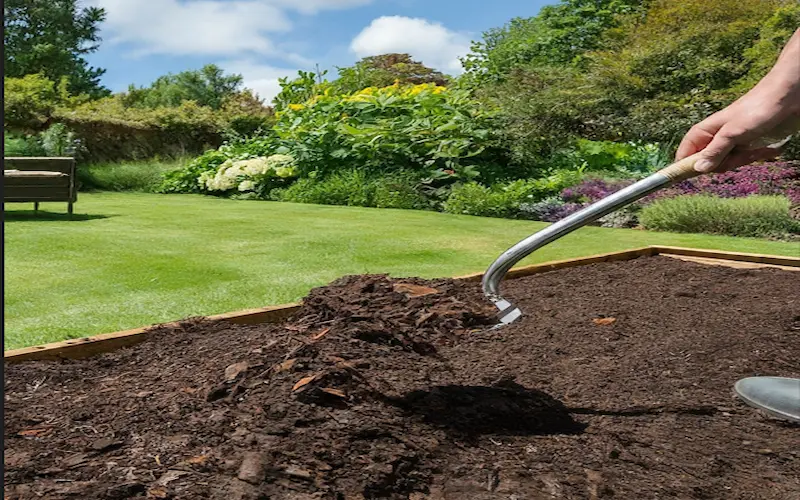
Planting Lemongrass Seeds
Planting lemongrass seeds is a delicate process that requires patience and care. Fill your seed trays or pots with the prepared soil mix. Sow the seeds thinly on top of the soil and cover them with a light layer, as lemongrass seeds need light to germinate. Gently press the soil to ensure contact between the seeds and the soil. Then, water the area with a fine mist to moisten the soil without disturbing the seeds.
Place the seed trays or pots in a warm area with temperatures between 70-85°F (21-29°C), the ideal range for lemongrass seed germination. Use a heat mat to maintain a consistent temperature if you cannot provide natural warmth. Covering the trays or pots with a clear plastic dome or wrap can help retain moisture and warmth, creating a mini greenhouse effect.
Keep the soil consistently moist but not soggy during the germination period. Check the moisture levels daily, and use a spray bottle to mist the soil as needed. With the right conditions, you should see your lemongrass seeds begin to sprout within a few weeks.

Caring for Lemongrass Seedlings
Proper care is essential to ensure they grow into vigorous, healthy plants. The first step is to ensure they receive plenty of light. If you’re growing the seedlings indoors, place them near a sunny window or under grow lights to mimic the sun’s natural rays.
As the seedlings grow, you’ll need to water them regularly. The goal is to keep the soil moist but not soggy. Overwatering can lead to fungal diseases and root rot, common issues with young plants. If you’re unsure whether to water, check the top inch of soil; if it feels dry, it’s time to water.
Once the seedlings have grown a few sets of true leaves and are a few inches tall, you can start hardening them off if you start them indoors. This process involves gradually exposing the plants to outdoor conditions. This acclimates them before you transplant them into your garden or larger pots. Start by placing them outside in the shade for a few hours daily. Gradually increase their time outdoors and sun exposure over a week or two.
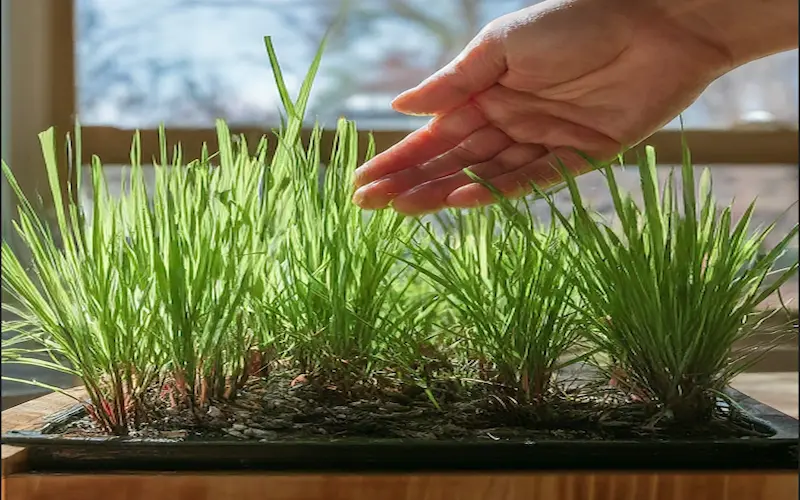
Common Challenges
Growing lemongrass from seed has its challenges. One common issue is damping-off, a fungal disease that can cause seedlings to collapse and die. To prevent this, ensure good air circulation around your seedlings and avoid overwatering.
Even though lemongrass is known for its pest-repellent properties, it can still be a problem when pests invade. Look for common garden pests such as aphids and spider mites. If you notice pests, you can often remove them by spraying the plants with a strong jet of water or using an organic insecticidal soap.
Climate is another challenge, especially in regions cooler than lemongrass’ native tropical environment. In these cases, you may need to grow lemongrass in pots. You can bring them indoors during colder months. Providing adequate warmth and light indoors will be crucial for the plant’s survival.
Harvesting and Using Lemongrass
When your lemongrass plants have matured and reached about a foot in height, you can begin to harvest. To harvest, simply cut the stalks at the base, being careful not to damage the root system. Always leave a few stalks on each plant so that it can continue to grow and produce more leaves for future harvesting.
Freshly harvested lemongrass infuses dishes with its citrusy flavour. It’s a staple ingredient in many Asian recipes, including soups, curries, and teas. You can also dry or freeze lemongrass for later use. To dry, hang the stalks upside down in a warm, dry place until they are brittle. For freezing, chop the stalks into smaller pieces and store them in an airtight container or freezer bag.
In addition to culinary purposes, lemongrass can be used to create essential oils with various therapeutic benefits. Distilling lemongrass for oil is more involved, but it can be rewarding to utilize your home-grown plants.
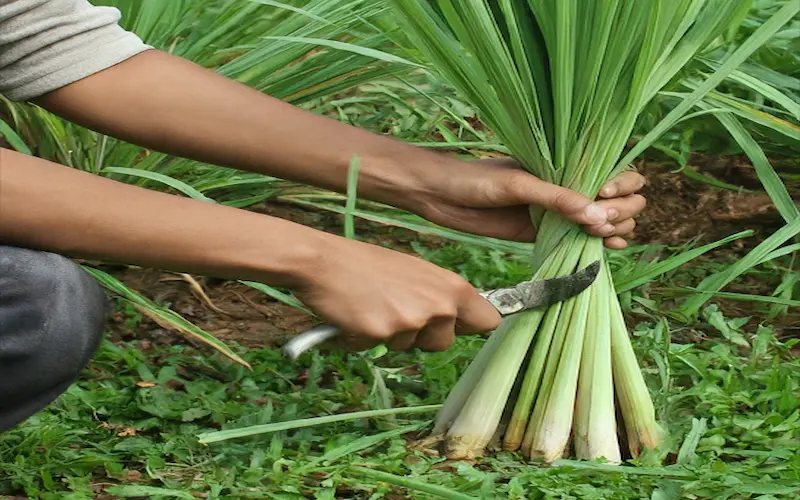
Troubleshooting Tips
There are many simple solutions to issues while growing lemongrass from seed. If your seeds are not germinating, it could be due to insufficient warmth or moisture. Make sure you’re providing a consistent temperature and keeping the soil moist.
If your seedlings are leggy and weak, they likely need more light. Move them closer to a light source, or consider using supplemental grow lights. Legginess is a sign of overcrowding. Seedlings are not too close together, and they will compete for light and resources.
Yellowing leaves can indicate overwatering or poor nutrition. Adjust your watering schedule. Consider feeding your plants a balanced, water-soluble fertilizer. It provides the nutrients for healthy growth.
Conclusion
Growing lemongrass from seed is a gratifying experience. It adds flavour, beauty, and health benefits to your life. By following the steps outlined in this guide, you’ll be well on your way to cultivating your lemongrass plants. Remember to pick the right seeds, prepare the soil, plant carefully, and keep nurturing your seedlings. With patience and attention, you’ll be able to enjoy the fruits of your labour—fresh lemongrass right from your garden or windowsill.

- Be Respectful
- Stay Relevant
- Stay Positive
- True Feedback
- Encourage Discussion
- Avoid Spamming
- No Fake News
- Don't Copy-Paste
- No Personal Attacks



- Be Respectful
- Stay Relevant
- Stay Positive
- True Feedback
- Encourage Discussion
- Avoid Spamming
- No Fake News
- Don't Copy-Paste
- No Personal Attacks



